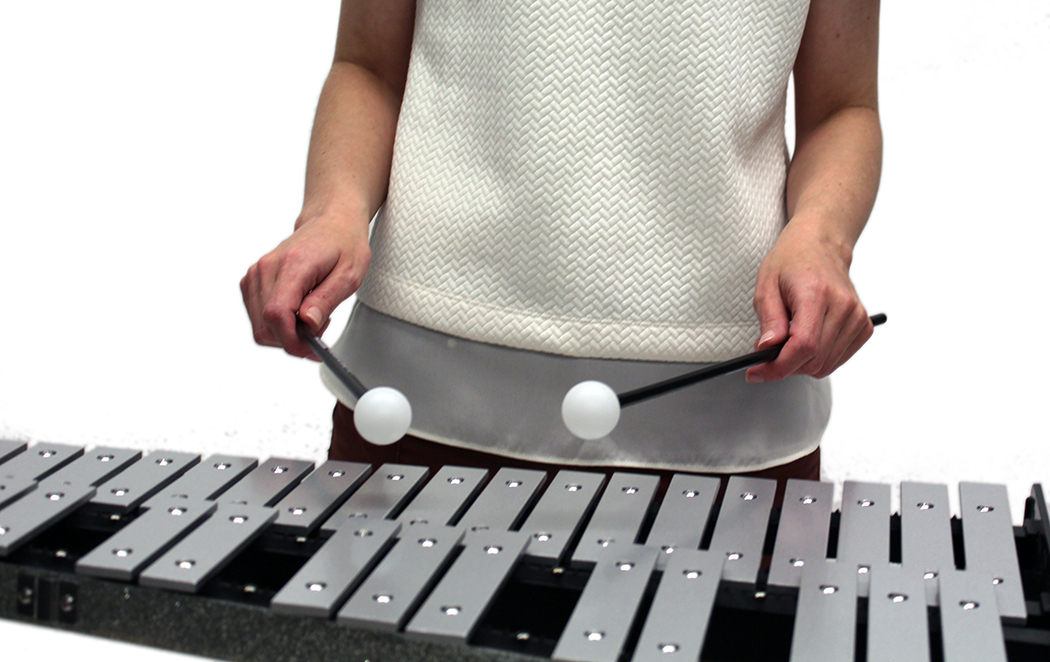General Principles for Holding Drumsticks or Mallets
Like all musical instruments, drumsticks and mallets should be held, not tightly gripped. Keeping a confident but relaxed hold on your sticks or mallets will allow them to “bounce” and do much of the work for you. If you find your fingers or wrists growing sore or fatigued as you practice, you are most likely squeezing the sticks too firmly.
Holding Drumsticks: Matched Grip and Traditional Grip
Whether you are playing a single drum or a full drum set, there are two main ways to hold your drumsticks, known as matched grip and traditional grip.
Matched Grip Techniques
Matched grip techniques involve holding a drumstick much like you would hold a hammer. Most of the work of holding the sticks is done by the thumb and index finger of each hand, which should be placed near the balancing point of the stick. Many drummers keep these fingers bent, although some prefer to straighten their index finger along the stick. The remaining three fingers rest lightly on the stick to stabilize it.
There are three styles of matched grip: French, German, and American. The main difference between them is the direction that the drummer’s palms face.
Palms Face Each Other for French Style.
In the French style of matched grip, the drummer’s palms are vertical, facing each other. When using this technique, your elbows will be at your sides, so that each arm looks like a large letter “L.” For the most part, you will use your fingers to move the sticks, enabling you to make quick, light strokes. For heavier, louder strokes, you will use your wrist in a “hammering” motion.
Face Your Palms to the Drumhead for German Style.
In the German style of matched grip, the drummer’s palms face downward. To get your hands into this position without putting strain on your wrists, move your elbows out from your sides so that your arms are in a “wing” position. When you use a German-style grip, you generate stick strokes almost entirely with your wrists, because of that every stroke will be powerful and resonant.
Go Halfway in Between for American Style.
In French style, the palms are vertical; in the German style, they are horizontal, facing downward. Halfway in between, with your palms at a 45-degree angle and your elbows slightly out from your sides, is the American style of matched grip. The American style allows the use of both your fingers and your wrists to generate strokes.
Traditional Grip
In the traditional grip, which is used by many classical and jazz drummers who want to play with a feather-light touch, the drummer’s palm faces upward. The stick rests on the loose “flap” of skin between the thumb and index finger, roughly two-thirds of the way up the stick from the tip. Your thumb and index finger should wrap around the stick so that the tip of your thumb touches the first knuckle (the one nearest to the fingertip) of your index finger. Rest your middle finger lightly on top of the stick, and place your ring finger below so that the stick rests on the fingernail. Your pinky finger will “float” off the stick or rest against your ring finger.
Most drummers use the traditional grip with only one hand, employing the American-style matched grip with the other hand. However, some drummers use the traditional grip with both hands.
Holding Mallets for Timpani, Xylophone, and Marimba
Mallets are always held using some variation of matched grip. Even the three- and four-mallet methods used by advanced xylophone and marimba players, which involve tricky ways of stabilizing the mallets between the fingers, have much in common with German-style matched grip.
Timpani players should use a French-style matched grip, holding the mallets near their ends. Use your wrists, not your fingers, to generate strokes. The motion will be very similar to striking a nail with a hammer
Beginning xylophone and marimba players should also use a French-style matched grip on their mallets. As you advance in your playing, you will find that allowing your elbows to float out from your sides at various distances—so that you essentially alternate between French, German, and American-style matched grips—helps you to cover a broader range of the instrument.
Providing All the Essentials
West Music offers a complete line of drum accessories, including a wide selection of drumsticks and percussion mallets, so that you will have everything you need for years of safe, fun and productive practice.




